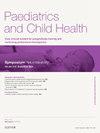评估、管理和预防儿童消瘦和营养性水肿的当前方法
Q3 Medicine
引用次数: 0
摘要
以消瘦和营养性水肿为表现的5岁以下儿童急性营养不良,仍然是一项持续存在的全球挑战,亚洲和撒哈拉以南非洲负担最重。本文概述了基于2023年世卫组织指南的实用、基于证据的诊断、管理和预防方法。目前的术语和分类的消耗性和营养性水肿和主要病理生理机制的描述。系统的管理方法可以区分非复杂和复杂的严重急性营养不良。对无并发症病例进行社区治疗护理的基础是使用即食治疗食品和密切监测。急性营养不良并伴有食欲不振和感染等并发症需要入院治疗。考虑到营养不良时发生的减少适应并避免快速重新喂养的风险,住院治疗分两个阶段进行:稳定治疗,解决直接危及生命的问题和并发症,然后进行营养康复,为出院做准备。6个月以下的婴儿是一个特别脆弱的群体,需要以综合护理为特征的专门方法,认识到儿童和照顾者之间的相互依存关系。预防战略强调与《儿童消瘦问题全球行动计划》相一致的多部门办法。通过实施这些循证方法,卫生专业人员可以显著改善患有或面临消瘦和营养性水肿风险的儿童的预后,特别是在资源匮乏的环境中,并为实现许多可持续发展目标的全球努力做出重要贡献。本文章由计算机程序翻译,如有差异,请以英文原文为准。
Current approaches to the assessment, management and prevention of wasting and nutritional oedema in children
Acute malnutrition in under 5s, manifest by wasting and nutritional oedema, remains a persistent global challenge with the greatest burdens in Asia and Sub-Saharan Africa. This article outlines practical, evidence-based approaches to diagnosis, management and prevention based on the 2023 WHO guidelines. Current terminology and classification of wasting and nutritional oedema and key pathophysiological mechanisms are described. A systematic management approach distinguishes between uncomplicated and complicated severe acute malnutrition. The cornerstones of community-based therapeutic care for uncomplicated cases are the use of ready-to-use therapeutic food and close monitoring. Acute malnutrition with complications such as poor appetite and infections require admission. To account for the reductive adaptation that occurs in malnutrition and avoid the risks of rapid re-feeding, inpatient management occurs in 2 phases: stabilization that addresses immediate life-threatening issues and complications followed by nutritional rehabilitation with preparation for discharge. Infants under 6 months are an especially vulnerable group requiring specialized approaches characterized by integrated care that recognizes the interdependence of children and caregivers. Prevention strategies emphasize multisectoral approaches aligned with the Global Action Plan for Child Wasting. By implementing these evidence-based approaches, health professionals can significantly improve outcomes for children with or at risk of wasting and nutritional oedema particularly in low resource settings and make an essential contribution to global efforts to achieve many of the Sustainable Development Goals.
求助全文
通过发布文献求助,成功后即可免费获取论文全文。
去求助
来源期刊

Paediatrics and Child Health (United Kingdom)
Medicine-Pediatrics, Perinatology and Child Health
CiteScore
1.20
自引率
0.00%
发文量
70
 求助内容:
求助内容: 应助结果提醒方式:
应助结果提醒方式:


